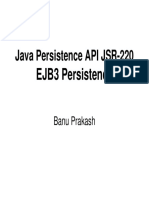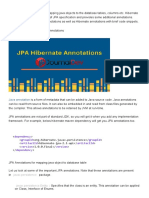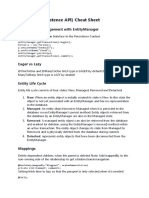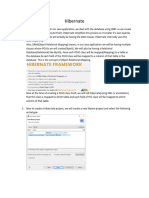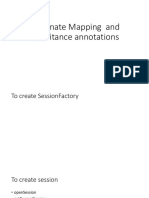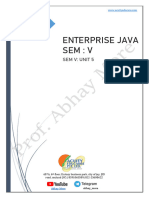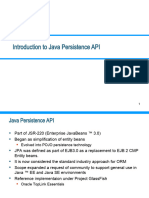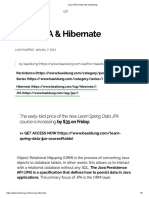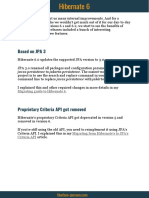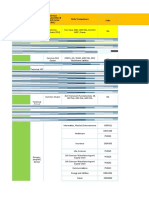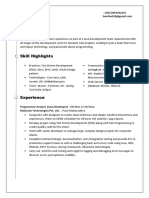0% found this document useful (0 votes)
21 views10 pagesHibernate Notes
Hibernate is a Java framework that simplifies database interactions through Object Relational Mapping (ORM), allowing developers to manage data without extensive SQL queries. It implements the Jakarta Persistence API (JPA) for database communication and offers advantages like fast performance and automatic table creation. The document also covers annotations, mapping types, cascading operations, and the lifecycle of entity classes in Hibernate.
Uploaded by
Sonu GuptaCopyright
© © All Rights Reserved
We take content rights seriously. If you suspect this is your content, claim it here.
Available Formats
Download as DOCX, PDF, TXT or read online on Scribd
0% found this document useful (0 votes)
21 views10 pagesHibernate Notes
Hibernate is a Java framework that simplifies database interactions through Object Relational Mapping (ORM), allowing developers to manage data without extensive SQL queries. It implements the Jakarta Persistence API (JPA) for database communication and offers advantages like fast performance and automatic table creation. The document also covers annotations, mapping types, cascading operations, and the lifecycle of entity classes in Hibernate.
Uploaded by
Sonu GuptaCopyright
© © All Rights Reserved
We take content rights seriously. If you suspect this is your content, claim it here.
Available Formats
Download as DOCX, PDF, TXT or read online on Scribd
/ 10



















